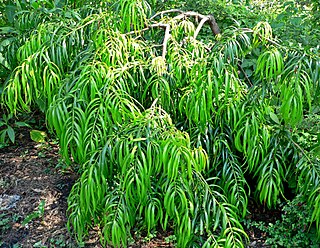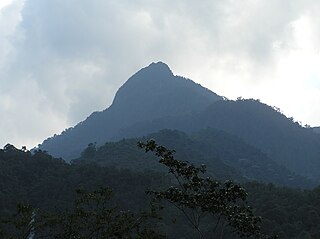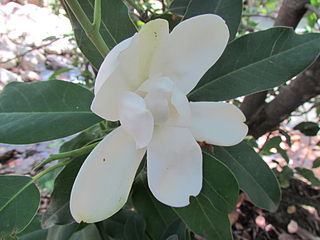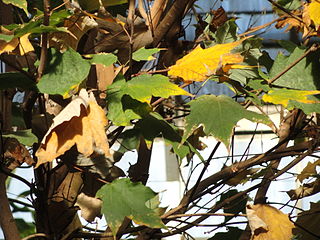
Quetzals are strikingly colored birds in the trogon family. They are found in forests, especially in humid highlands, with the five species from the genus Pharomachrus being exclusively Neotropical, while a single species, the eared quetzal, Euptilotis neoxenus, is found in Guatemala, sometimes in Mexico and very locally in the southernmost United States. In the highlands of the states of Sonora, Chihuahua, Sinaloa, Durango, Nayarit, Zacatecas, Jalisco, and Michoacán, the eared quetzal can be found from northwest to west-central Mexico. It is a Mesoamerican indigenous species, but some reports show that it occasionally travels and nests in southeastern Arizona and New Mexico in the United States. June to October is the mating season for eared quetzals. Quetzals are fairly large, slightly bigger than other trogon species. The resplendent quetzal is the national bird of Guatemala because of its vibrant colour and cultural significance to the Maya.

Abies guatemalensis, the Guatemalan fir or pinabete, is an evergreen tree native to Central America and is the southernmost member of the genus Abies being spread to the south lower than 14° N. Its range is from southern Mexico in the north to Honduras and El Salvador in the south. It is a warm-loving and moisture-loving tree of the tropical mountain coniferous and mixed cloud forests of these countries. The Guatemalan fir is an almost completely non-frost-resistant tree. Due to logging and loss of habitat, the tree is considered threatened and is protected in CITES Appendix I.

Podocarpus matudae is a species of conifer in the family Podocarpaceae. It is found in Guatemala, El Salvador, Honduras and Mexico.
Magnolia iltisiana is a species of plant in the family Magnoliaceae. It is endemic to Mexico. Common names include ahuatoso and yoloxochitl.
Magnolia schiedeana is a species of flowering plant in the family Magnoliaceae. It is endemic to Mexico, where it occurs along the slopes of the Gulf of Mexico.

Quercus benthamii is a species of oak in the family Fagaceae. It is native to the cloud forests of Central America and southern Mexico. It is threatened by habitat loss.

Quercus martinezii is a species of oak found in southwestern and central Mexico. It has been found in Nayarit, Jalisco, Michoacán, Guerrero, and Oaxaca states. It is placed in Quercus section Quercus.

Quercus uxoris is an uncommon species of oak.

The Trans-Mexican Volcanic Belt pine–oak forests is a subtropical coniferous forest ecoregion of the Trans-Mexican Volcanic Belt of central Mexico.

Farallones de Cali is a cluster of mountains in the West Andes of Colombia. It is located west of the city of Cali and gives rise to many of the rivers that provide water and electricity to Cali. The PNN Farallones de Cali encompasses 150,000 ha (580 sq mi) in the mountains as well as much of the Pacific slope and is an area of very high biodiversity. The average temperature ranges from 25 °C (77 °F) in the tropical foothills to 5 °C (41 °F) in the páramo. In this territory are located the district of Pichinde, Andes and Leonera, and two villages Penas Blancas and Lomas de la Cajita.

Quercus polymorpha, the Mexican white oak, Monterrey oak or netleaf white oak, is a North American species of oak. It is widespread in Mexico, Guatemala, and Honduras, and known from a single population in the United States but widely planted as an ornamental.
The Mohamed Bin Zayed Species Conservation Fund is an endowment that promotes species conservation worldwide headed by Mohammed bin Zayed Al Nahyan, the current ruler of Abu Dhabi and President of United Arab Emirates. The fund was established in October 2008 and became active in January 2009. It had an initial endowment of €25 million. Proceeds from the endowment are directed to projects to conserve threatened and endangered species of animals, plants and fungi around the world. It gave more than $2.4m in 2010 to 214 projects in almost 80 countries. From 2009 to summer 2019, the MBZ Fund has supported 1,982 projects with $18.5 million dollars across more than 150 countries.

Quercus elliptica is a Mesoamerican species of oak tree. It is widespread across central and southern Mexico and Central America from Sinaloa and Hidalgo south as far as Nicaragua. It is classified in Quercus sect. Lobatae.

Quercus insignis is a Mesoamerican species of oak in the white oak section, within the beech family. It is native to southern Mexico and Central America, from Veracruz to Panamá.

Quercus iltisii is a species of oak tree native to western Mexico, where it is found in a small portion of Jalisco and Colima states.

Magnolia pacifica is a species of Magnolia from Jalisco and Nayarit states in western Mexico.

Acer skutchii, often called the cloud forest sugar maple, Guatemalan maple, Mexican sugar maple, Skutch maple, or álamo plateado is a species of flowering plant in the genus Acer, native to Mexico and Guatemala.
Magnolia pugana, commonly known as almacasusco, is a species of Magnolia from northern Jalisco and southern Zacatecas states in western Mexico.

Magnolia vallartensis is a species of Magnolia from Jalisco state in western Mexico.
Quercus nixoniana is an endangered species of oak tree native to southern Mexico. It is found in humid mountain forests of southwestern Mexico, in the states of Jalisco, Guerrero, and Oaxaca.















